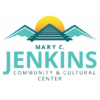
“The original School, built in 1910 and known as the Brevard #2 Colored School, was a frame building erected by a woman named Pruden from the North and a group of local black leaders. Martha Slowe was the principal.” In 1920, the four room school added three more rooms when it became one of 813 educational facilities built or renovated in North Carolina under the Rosenwald Fund. In coordination with local governments and communities, it led to the construction of 5,357 schools and related buildings in 15 southern states. This remodeled building was called the Brevard #2 Rosenwald School.
A Rosenwald Fund grant acted a bit like today’s matching grants as communities were required to raise money prior to qualifying. The Fund typically provided just a fraction of the money necessary to construct a school, perhaps 25% or less. In Brevard this became a community-wide project with a renovation cost of $4,850. The Black community raised $1,195 and the general public contributed $2,755, thus qualifying for the $900 Rosenwald grant.
Located at the junction of West Main Street and Rosenwald Lane, “the Rosenwald School was a microcosm of the community it served; teachers and pupils lived on the same streets, shopped in the same stores, worshiped at the same churches, and teachers and parents served on the same committees, confronted similar social and economic problems, and sought each other’s advice about issues in daily life.”
Primarily, the expansion construction included the addition of 3 rooms, changes in the windows and new furniture. The 1938 Transylvania County Insurance Analysis lists it as a wood frame building with a metal roof and having 4300 square feet. The design was consistent with other Rosenwald Schools.
The building mysteriously burned on March 12, 1941. Students then attended school in churches and other community locations until a new building was completed in 1948, sideways across the street from the original location. This facility was built at a maximum cost of $136,100 and was also assisted by funds from the Julius Rosenwald Foundation. It is a “substantial stone building that followed Erie Stillwell’s general plans from the Davidson River School.”
When it was completed, the Board of Education decided to consolidate the Glade Creek and Rosenwald Schools. It covered grades 1 through 8 at which point African American students were bused to Hendersonville 9th Avenue High School for grades 9 -12 until Transylvania County Schools were officially integrated on June 21, 1966.
Mrs. Ethel K. Mills served as the Principal, whose vast experience brought a sense of continuity to the school’s history. until its closing in 1966. She was known for her “Pearls of Wisdom.” An example: “You should set high goals for yourself, work to reach those goals and be the best at whatever you do.” Ethel Mills was a beloved figure in the African American community as were the teachers and mentors that strived to provide opportunities and improve the education of the community’s young people.
The National Trust for Historic Preservation estimates that by 1928, one in every 5 schools for Blacks in the rural south was a Rosenwald School. The program statistics remain staggering today. The school-building program closed in July 1932.
Schools built: 4,977 plus 217 teachers’ homes and 163 shop buildings.
Students served: 663,615
Total Cost: $28,408,520
- The Brevard Rosenwald School by Betty Reed
- Negroes of Transylvania County 1861-1961 by Nathaniel B. Hall
- “Brevard Rosenwald School” from Architects & Builders. Contributor: Erie Stillwell, Architect
